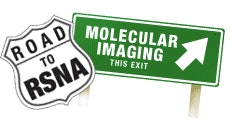This year has been a roller-coaster ride for molecular imaging practitioners and advocates in the U.S., with a series of high-profile wins and losses.

This good news was offset by troubling reimbursement information from the Centers for Medicare and Medicaid Services (CMS), which issued a final rule earlier this month slashing rates for 2007 PET studies under its Outpatient Prospective Payment System (OPPS).
The cuts range from 24% to 71% of 2006 reimbursement levels, and are particularly troubling for the outpatient imaging center PET market, as the Deficit Reduction Act of 2005 caps the Medicare technical component reimbursement for these facilities to the lesser amount of either OPPS or the Medicare Part B Physician Fee Schedule (MPFS).
The question is whether the lower reimbursement rates will take the wind out of PET's sails in 2007. Recent market studies indicate that the modality has been enjoying a banner year of growth in both scanner sales and procedure volume.
The installed base of PET and PET/CT systems in the U.S. has been growing at an annual average rate of 13% over the past three years, according to an estimate by market research firm IMV Medical Information Division of Des Plaines, IL. That compares to the mature SPECT market, which has basically been treading water, growing at an average annual rate of less than 1% over the last three years.
PET has also grown on the procedure volume side. In all, 1.13 million PET procedures were performed in 2005, up 60% from 706,100 total studies in 2003. While PET/CT scanners make up about 55% of the installed base of PET and PET/CT systems, the hybrid scanners constitute over 90% of units shipped in 2005, IMV said.
Regardless of the wins and losses in the clinical and regulatory segments of the molecular imaging market in 2006, nuclear medicine vendors are scheduled to bring a cornucopia of enhancements and refinements to products that will be showcased in the technical exhibit halls of Chicago's McCormick Place later this month.
New software tools are being offered that utilize advanced visualization technologies to further expand the diagnostic capabilities of PET, PET/CT, SPECT, and SPECT/CT. Upgrades and improvements to existing gamma camera products will be displayed and demonstrated, as will a clutch of new devices for breast, thyroid, oncology, and cardiac imaging applications.
To find out more about what's happening in molecular imaging technology at the 2006 RSNA conference, click on a link below.
Disclosure notice: AuntMinnie.com is owned by IMV, Ltd.




















